Authors:
ABSTRACT
Aim
This was to investigate if the pattern of distribution of caries lesions detected by clinical and radiographic examinations
at different diagnostic thresholds changed over a 3-year period during the course of eruption of the permanent dentition. It has been
hypothesized that the contribution of bitewing radiography to caries detection in posterior teeth may increase when approximal contacts
are established during maturation of the dentition.
Methods
Clinical and radiographic caries recordings were made using the non-
cavitated/enamel and cavity/dentine thresholds for caries detection among a group of 12-year-old Lithuanian children with a high caries
experience. Examinations were repeated in the same children after 3 years. The bitewing radiographs from both examination sessions
were coded to ensure unbiased recordings and were read by a single examiner.
Results
The diagnostic yields of the clinical and
radiographic examination methods did not change after the permanent teeth had fully erupted. At both examination sessions the clinical
examination resulted in the detection of significantly more lesions than did the radiographic method at the non-cavitated level (43-
47 lesions detected by clinical means only and 2-26 by radiographic means only). Only for approximal surfaces at the
cavity/dentine diagnostic threshold did radiographs contribute to more lesions (15-16 lesions detected by clinical means only
and 38-41 by radiographic means only). Establishment of approximal contacts in the permanent dentition did not increase the
relative diagnostic yields of bite-wing radiography in this study group.
Conclusion
The contribution of the two methods to caries
diagnosis depends more on the diagnostic threshold selected than on the stage of maturation of the dentition.
PLUMX METRICS
Publication date:
Keywords:
Issue:
Vol.5 – n.3/2004
Page:
Publisher:
Cite:
Harvard: V. Machiulskiene, B. Nyvad, V. Baelum (2004) "Comparison of diagnostic yields of clinical and radiographic caries examinations in children of different age", European Journal of Paediatric Dentistry, 5(3), pp157-162. doi:
Copyright (c) 2021 Ariesdue

This work is licensed under a Creative Commons Attribution-NonCommercial 4.0 International License.
